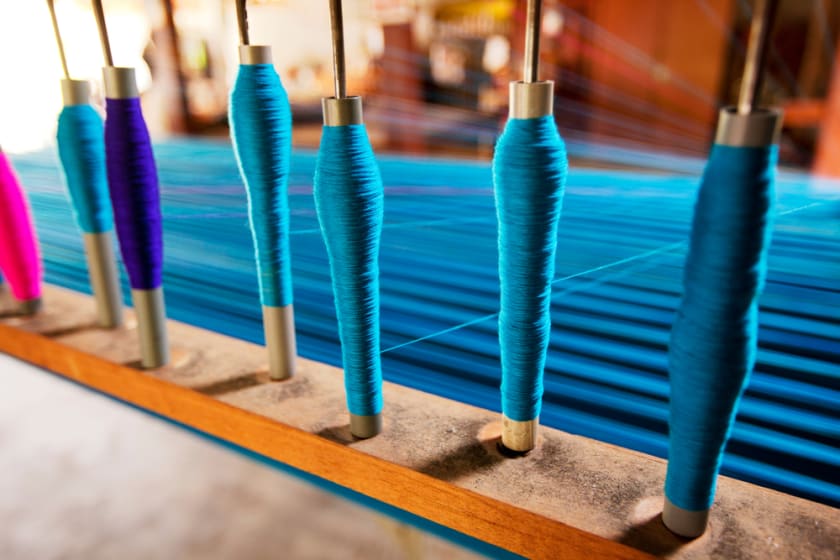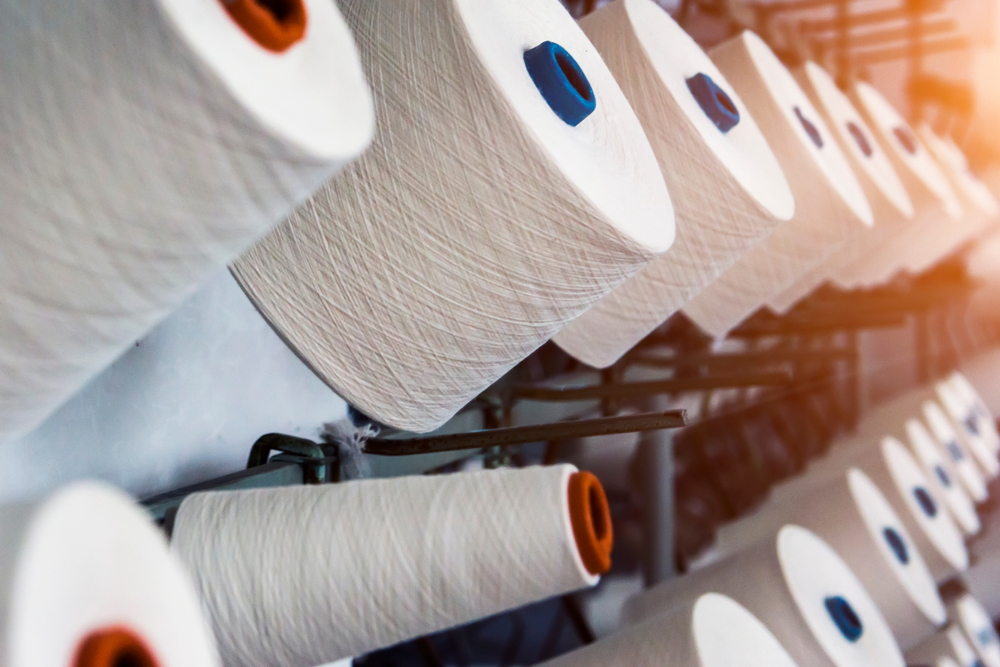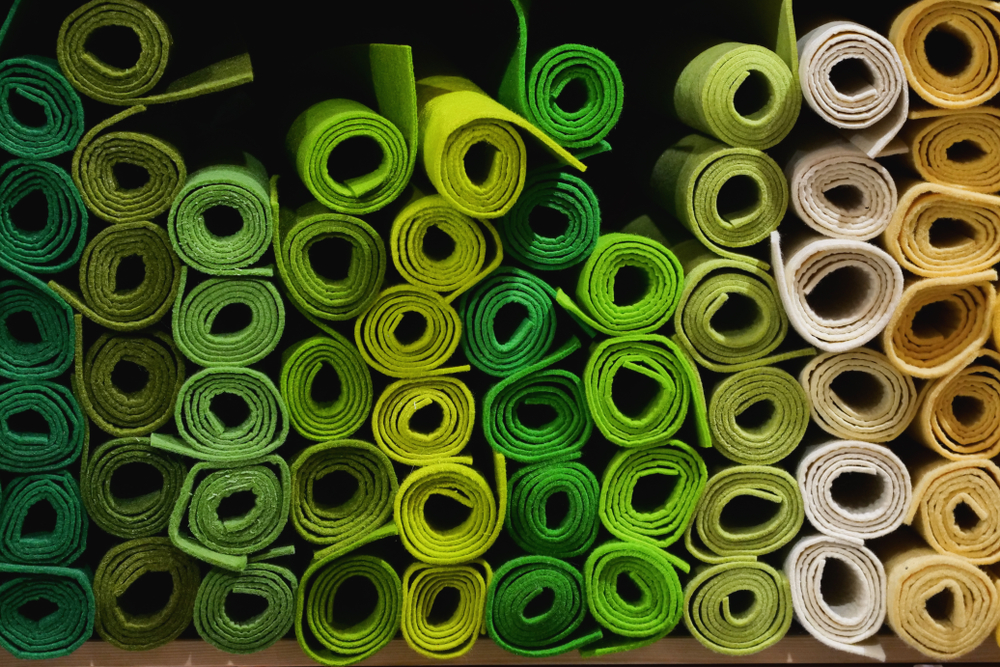Spinning Process: What Is Cone Winding Process?



The textile industry has significantly benefited from technological advancement in the last few decades. Advanced machines take care of each step of the textile spinning process. The spinning process involves multiple steps, from removing impurities to the final step of the appropriately packaging fabric. The yarn spinning process, which was primarily manual, is now completely automated. To ensure that the yarn can be enhanced and used for textile manufacturing, the steps of the spinning process include airflow (blow room), carding, combining, drawing, roving, and cone winding. The final step, cone winding, is the most crucial as it decides the quality of the yarn.
This article will discuss the objectives, quality maintenance, and demands of cone winding in the yarn spinning process. Before deep-diving into cone winding, let us learn about the spinning process and its various steps.
What Is the Yarn Spinning Process?
Converting fiber such as cotton, wool, and jute into yarn using textile machines is called the spinning process. There are different spinning processes for various raw materials. Here are the crucial steps involved in yarn spinning.
Blending (Blow Room)
It is the preparation step of the spinning process. The raw material comes as bale. In this step, the bale is cleaned and mixed using a blending machine, and later airflow is used to maintain the fiber uniformity.
Carding
Carding is where the yarn spinning truly begins. The blended bale is detangled, cleaned, and intermixed many times to produce lays—a sheet of fibers of the same thickness using various mechanical steps. Further, the lays are condensed to create a web of thread known as silver.
Combining
In combining or combing, the silver is kept parallel to each other, and short-length fibers are combed out. Combining is vital to ensure fiber strength and quality.
Drawing
The drawing or draw frame process makes silver thinner for yarn preparation. The drawing is done using a gilling machine. Depending on the fabric requirements, drafting is repeated to produce drawn silver.
Roving
Roving, also known as ring frame, is used to reduce the size of drawn silver so that the yarn can spin easily. A slight twist is added that helps in roving down and up.
Cone Winding
The last step of the spinning process is cone winding. This process is the bridge between yarn creation and fabric manufacturing. The yarn is packaged and made ready for the next steps, such as dyeing, weaving, and garment production.
We will discuss the cone winding step in detail. However, let us look at different types of spinning in the textile industry.
What Are the Different Types of Spinning Processes?

The objective of the spinning process in the textile industry is to draw fiber at a mass scale and spin it together to make a continuous thread of fiber, known as yarn. The type of spinning employed depends on the type of fabrics. Here is a list of various spinning methods used by spinning mills.
- Rotor Spinning
- Ring Spinning
- Self-Twist Spinning
- Friction Spinning
- Air Jet Spinning
- Vortex Spinning
- Wet Spinning
- Dry Spinning
- Acro Dynamic Spinning
- Melt Spinning
- Bi-Component Spinning
- Integrated Composite Spinning
- Film Splitting Spinning
- Cover Spinning
- Twistless Spinning
Why Is Cone Winding Important?
Cone winding is the last stage of the yarn spinning process in textile manufacturing. This step defines the quality of the yarn and, eventually, the quality of the end product. Hence, the team responsible for cone winding must do their job with due diligence. In this process, ring cops are used to make cone packages which are further used in textile and apparel manufacturing.
In a competitive world, a small mistake in packaging can cost a lot. The cone winding stage is the last stage when bad materials are identified and either corrected or withdrawn, depending on the amount of damage. Customers want quality, and if there is any lapse in packaging, it can negatively impact an existing business relationship. If it happens with a well-known brand, the cost can be much more severe.
Primary Objectives of the Cone Winding Process
There are many expectations from the winding processes. The packaging has to be as per requirement, and there should be no compromise with the quality. However, the three key objectives and demands from the cone winding step are:
- Scan and remove faults from the yarn. Such defects are called scan-cuts.
- Remove yarn knots and bad pieces by auto-splicing yarns.
- Build packages that assist high-speed warping and weaving as per the desired dimensions.
Demands from Effective Winding Process
The cone winding stage can only be called a success if it meets both the quantitative and qualitative aspects. All the functions of winding machines help in meeting these demands. The quality can be checked by doing online and offline testing.
Quality Aspects of Winding Process
Yarn and packaging have to be fault-free. The critical criteria for measuring quality are cone weight, cone length, and cone density. People supervising the cone winding process must look out for the following defects that can impact the quality of packaging:
- Missing tail end
- Wrinkles
- Double or missing ends
- Stitch
- Cut cone
- Extra hard cone
- Soft cone
- Stain
- Cone rings
- Drum lapse
- Patterning
The yarn quality depends on five parameters: Bobbin to Cone increase in U% (unevenness percentage) and IPI value, classimat faults, rewinding faults, knotless yarn, and yarn friction. Below are the acceptable deterioration values.
- Unevenness percentage (U%) between 3 to 5%
- Thin places can be up to 0.5%
- Thick places could be between 15 to 20%
- Neps could be between 5 to 10%
- Hairiness levels between 25 to 30%
Irregularities beyond these acceptable limits can cause significant issues in the textile material and lead to rejection, causing losses.
Quantity Aspects of Winding Process
Textile manufacturing thrives on high-speed textile development. The focus in the winding process is always to increase productivity and produce less hard waste to generate maximum value and profit. Many factors determine productivity, such as,
- Winding speed
- Cycling
- Repeater
- Suction failure
- Splice failure
- Bobbin quality
- Winding cuts
- Loop gate functioning
The textile companies that can successfully meet the winding process' quality and quantity demands can expect to survive in today's competitive market. Hence, the various factors mentioned above play a crucial role in managing these demands and generating high-quality fabrics. Any faulty cones should be removed during an inspection and managed accordingly.
How to Manage Faulty Cones
Cone winding is not limited to quality checks and the elimination of faulty yarns. It would be best if you also decided what to do with defective windings. Depending on the level of fault, a spinner can:
- Rewind it: If the cost associated is manageable, the fault can be removed by rewinding.
- Keep it: If the fault is negligible, rewinding can further damage the fabric.
- Degrade it: It's a financial loss when the faulty cone is degraded to a lower level but not removed.
- Remove it: If no other option is feasible, defective yarn is removed from the packaging, causing financial losses.
Tips to Monitor and Maintain the Cone Winding Process

The spinner managing the cone winding process must take care of the following points to ensure a better quality of yarn production.
- The winding speed must be around 1200 meters per minute.
- The spinners should monitor the rotation of the wax roller regularly.
- The yarn length per chase should be approximately 3.5 to 5.5 meters.
- The bobbin hardness must be in the range of 50° to 55°.
- The top and bottom clearances should be around 10 mm.
- Back winding coils should be between 1.5 to 2.5, and the length should not exceed 80 centimeters.
- The splice strength should be at least 75% of yarn strength.
- Appropriate cleanliness must be maintained, especially while using wax rollers and attachments.
Conclusion
Cone winding is a critical step in the yarn spinning process, and the spinners working must ensure proper monitoring and quality adherence. A good textile product comes from the spinning process, specifically winding. The quality is not limited to the product; it also means maintainability, reliability, production, and financial viability. Hence, the idea of quality may be different for different customers and has to be dealt with effectively.
Finding partners who can spin yarns for you or finding out industry-standard parameters and trends can be challenging. Fashinza, a marketplace that provides futuristic supply chain management for the apparel industry, can make this process hassle-free. Our platform can help place orders, track them, receive daily production updates, communicate with manufacturers, and make payments.
Apart from connecting with key stakeholders in the industry, including manufacturers and suppliers, you can also find excellent insights into how the new-age textile industry works.


Revisiting The Bangladesh Accord: An Attempt To Secure Worker’s Right to Safety
5 min read
7.5k views

Here are Some Suggestions to Formulate Right Sourcing Strategy For The Textile And Apparel Industry
5 min read
7.1k views

A Case Study on Manufacturing Processes for Virtual Garment Sample
5 min read
7.7k views















